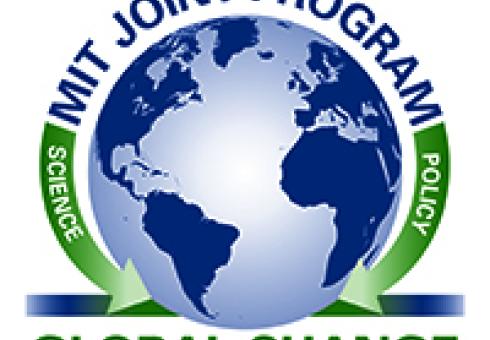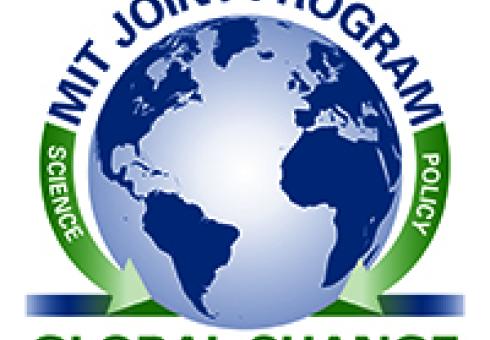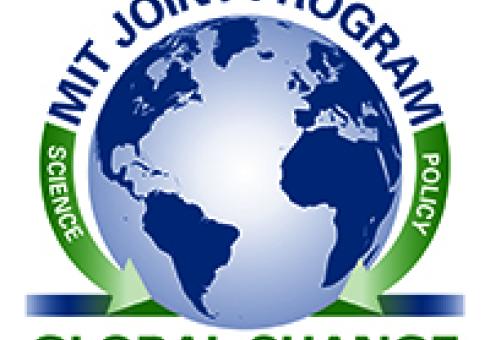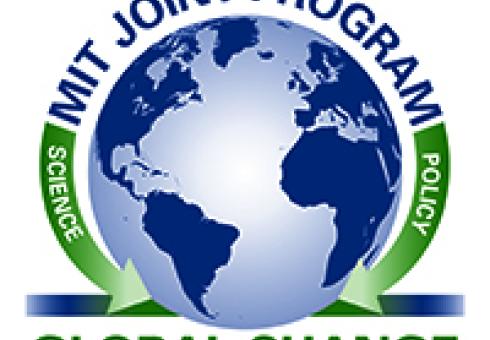News + Media
Plug-in hybrid electric vehicles (PHEVs) can make a significant contribution towards reducing ozone levels. That's according to a study by US researchers who modelled the effect of different charging scenarios for PHEVs on ozone levels over the state of Texas, US.
Many regions of Texas fail to meet national air quality standards for ozone. Tammy Thompson and her colleagues from the University of Texas wanted to find out what effect the introduction of PHEVs would have on the levels of this pollutant.
A previous study had looked at night-time charging of PHEVs using electricity generated by coal-fired power stations. Although the researchers found that the overall ozone concentration would decrease by up to 8 ppb in a few highly populated areas, the work also showed that ozone concentrations, and those of other pollutants, might actually increase in certain highly localized areas (like those close to the power plant, for example), leading to an overall worsening of air quality. This suggests that the overall impact of PHEVs will be complex.
"We wanted to expand on this and look at different charging scenarios, and also model the Texas power grid to take into account the different sources of electricity," Thompson told environmentalresearchweb.
The researchers examined the impact of replacing 20% of gasoline-powered vehicle miles travelled (VMT) with electric VMT by the year 2018 in four major Texas cities. This involved first modelling the Texas power grid and the different electricity generation units that will be online in 2018 – including nuclear, coal, natural gas, biomass and wind energy plants.
Using this data, the researchers then modelled the different levels of ozone precursors, such as nitrogen oxides (NOx), that would be emitted by these power stations when the PHEVs are being charged. They used three different charging scenarios – night-time charging; charging to maximize battery life; and charging to maximize driver convenience. "Using this data to then model ozone levels is not straightforward because ozone is formed via a photochemical reaction when NOx, carbon monoxide and volatile organic compounds (VOCs) react in the atmosphere in the presence of sunlight," said Thompson. "For our modelling, we selected four days in 2018. These days were selected to represent four varying wind patterns, each blowing the emissions from power plants into or away from the cities being modelled."
The calculations showed that day-time ozone levels were reduced in most cases and were mainly due to the fact that there were fewer gasoline-powered cars on the roads. The different charging scenarios all produced similar amounts of ozone, with the night-time charging scenario deemed the most environmentally friendly.
"Ozone levels drop during the night because sunlight drives the production of ozone," said Thompson. "But Texas has more installed wind power than any other state and that wind blows strongly at night, which opens up the prospects for emissions-free charging of some portion of electric vehicles."
However, Texas experiences many episodes of high ozone concentrations and Thompson warns that "it is going to take a lot more than just a few PHEVs to significantly change the ozone levels over Texas for the better".
The researchers published their research in Environmental Research Letters (ERL).
Photo credits: Justin Knight
U.S. chief climate negotiator, MIT panel examine the science and policy of global warming
Signing a legally binding treaty that would force emissions reductions throughout the world is not likely in the near future, according to U.S. State Department Special Envoy for Climate Change Todd Stern, who visited MIT last week. But that shouldn't stop the United States from moving forward in addressing climate change issues, he said.
Stern's talk on Thursday, April 22, was part of the Earth Week Colloquium sponsored by the MIT Energy Initiative (MITEI) and the Joint Program on the Science and Policy of Global Change.
In his speech, Stern said work on an international treaty would inevitably hit a “dead end,” primarily because of a flaw in the first major global climate treaty signed nearly two decades ago. In 1992, 194 parties signed the United Nations Framework Convention on Climate Change, a non-binding agreement between countries to reduce greenhouse gas emissions. The treaty set no mandatory limits, but it did draw a distinction between developed and developing countries. Ever since, Stern said, there has been a “firewall” at the negotiating table, with developing countries such as China arguing that the United States and other developed nations should bear the brunt of greenhouse gas reductions. [More... ]
Climate change, from past to future
Following Stern’s talk, a panel of MIT experts discussed scientific developments in climate change over the past 150 years, and made projections for the next 100 years, based on climate models and on-the-ground action to address global warming effects.
The panel was moderated by John M. Reilly, co-director of the MIT Joint Program on the Science and Policy of Global Change. Participants included Kerry Emanuel, the Breene M. Kerr Professor of Atmospheric Science; Christopher Knittel, the William Barton Rogers Professor of Energy Economics; MITEI Director Ernest Moniz, the Cecil and Ida Green Professor of Physics and Engineering Systems; Ronald Prinn, the TEPCO Professor of Atmospheric Science; and Sarah Slaughter, MITEI's associate director for buildings and infrastructure.
Emanuel looked back at the history of climate change, noting that hundreds of thousands of years ago, the very site where the panel was held — Wong Auditorium — would have been buried under a massive sheet of ice. Emanuel pointed out that volcanic activity and other natural phenomena may explain temperature spikes during the Earth’s early history, but “there aren’t any other culprits” aside from humans to explain the warming trends seen in the past 150 years.
Prinn, who discussed the next 100 years, described a “new dimension to climate science,” with climate modelers working with social and political scientists to examine patterns of human activity related to global warming. Prinn said science is already revealing alarming signs of climate change, including shrinking summer sea ice in the Arctic, a harmful rise in ocean acidity and increased destructiveness of hurricanes.
Knittel brought an economist’s perspective to the panel, noting that “what we really want is a global price on carbon dioxide.” Setting a fee for carbon-polluting technologies would serve as an incentive to develop alternative energy sources. While a carbon price is unlikely, Knittel pointed to actions by some U.S. states, including California, to set emissions standards for state transportation and electricity sectors.
Following Knittel’s talk, Moniz outlined existing low-carbon technologies and their challenges. He said, “De-carbonizing … really is the big game-changer … but there’s enormous pressure to provide energy services for nine to 10 billion people by mid-century.” Moniz said setting emissions standards would eventually squeeze out high-carbon energy sources such as coal and natural gas, leaving a huge energy gap to fill. “We better have a bridge to somewhere,” Moniz said. “And that somewhere is ultimately zero-carbon sources like nuclear, carbon sequestration and renewable energy.”
Slaughter rounded out the panel with a look at action on the ground to address climate change. She noted that “even if we could magically stop greenhouse gas emissions right now,” global temperatures would continue to rise. She and other faculty members at MIT have partnered with a number of organizations to identify ways to transform transportation and building infrastructure to be more energy efficient and environmental-disaster resilient.
But Slaughter ended the climate discussion on an optimistic note: “Rather than repaving or simply moving the things we have now ... we actually have an incredible opportunity to build the world we want to live in.”
In MIT visit, Lisa Jackson discusses how technology can affect government regulations.
Technological innovations have the ability to change environmental policies just as much as those policies can affect innovation, U.S. Environmental Protection Agency (EPA) Administrator Lisa P. Jackson said during a visit to MIT on Friday, Apr. 15. In delivering the annual Henry W. Kendall Memorial Lecture, Jackson urged students and faculty at the Institute to look for sustainable solutions to environmental problems.
Jackson, a chemical engineer, addressed the relationship between science and environmental policy, and spoke about the chicken-and-egg nature of her job. “How do we implement the laws we have, and try to make sure we don’t stifle innovation … but also ultimately realize we need legislation to get there?” she said.
She noted that environmental policies often act as incentives for scientists to develop new technologies. At the same time, new inventions can spur changes in environmental laws. “We catalyze each other,” she said.
A symbiotic relationship between science and environmental policy is especially crucial for the issue of climate change, Jackson said. Earlier this month, members of Congress drafted measures that would have prevented the EPA from regulating carbon dioxide and other greenhouse gases under the Clean Air Act, a “fairly draconian move,” according to Jackson. The Senate failed to pass the measures, and President Barack Obama has said he would veto any similar bills in the future.
Photo credit: Manohar Balagatte Srikanth
But the issue is likely not dead, Jackson said, and when it comes time for Congress to draft the federal budget for 2012, “we’ll probably see this battle played out again.” In the meantime, provided the EPA’s authority remains intact, the agency will start to set milestones for industries — the energy sector in particular — to curb greenhouse gas emissions, she said. Looking ahead, Jackson said she would like to see the conversation on climate change shift from politics to science, to focus on developing technologies to minimize greenhouse gas emissions. Such innovations, she hopes, could ultimately push climate change policy forward.
“I think we do have policy cobwebs all over the place right now,” Jackson said. “I will admit I have a bias that leads me to believe — partly as an engineer — that we have to not settle for standards that are not progressive enough.”
[More... ]
Moderator: John Reilly
Kerry Emanuel '76, PhD '78
Ronald G. Prinn SCD '71
Chris Knittel
Ernest J. Moniz
Sarah Slaughter '82, SM '87, PhD '91
Todd Stern, US Special Envoy for Climate Change
While impacts will vary by region, projections indicate that drought frequency will increase throughout most of the contiguous United States.
Danya Rumore, Joint Program on the Science and Policy of Global Change
The impacts of drought in the United States are estimated to cost an average of $6 to $8 billion per year. These impacts are likely to increase if drought risk throughout the United States is exacerbated by climate change, suggests a team of researchers led by Ken Strzepek of the MIT Joint Program on the Science and Policy of Global Change.
To analyze the effect of climate change on the frequency and intensity of droughts across the contiguous United States, the team looked at 99 water sub-basins, applying two different indices for drought to all 22 Intergovernmental Panel on Climate Change (IPCC) circulation models under three emissions scenarios (SRES). Results indicate that meteorological drought — which is based upon precipitation alone — will become more frequent in some parts of the U.S., such as the southwestern states, and less frequent in others. However, projections suggest that hydrological drought — which is based upon precipitation and temperature, which affects soil moisture — will increase across most of the country.
Given the comprehensive nature of the study, researcher Gary Yohe of Wesleyan University suggests that, "These results are robust across the economic drivers of climate change — as reflected in the alternative socio-economic scenarios (three IPCC SRES alternatives) — and the sensitivity of the climate to increased greenhouse-gas concentrations.” Additionally, the study finds that different definitions of drought generate different projections of drought distribution and frequency, pointing to the need to use multiple indices when studying drought risk.
Model projections indicate that the impact of climate change on drought frequency and severity will vary by region, with the southwestern U.S. and Rocky Mountain states likely to experience the largest increases in drought frequency. Additionally, results suggest that climate change may increase the longevity of droughts in many regions, causing events that would otherwise be mild droughts to become severe or even extreme droughts. This finding is important for policymakers who are considering adaptive responses, as current measures to manage droughts may be overwhelmed by large changes in the severity of future droughts. While the authors suggest that exploiting existing excess water storage capacity or reservoir yield may be able to ameliorate the negative impacts of increased drought, they caution that greater research is needed in this area to identify basins where such opportunities exist.
This study did not explicitly analyze the effect of greenhouse gas emissions mitigation on drought risk; however, results demonstrate that the impact of climate change on drought frequency will depend upon the level of future greenhouse gas emissions, providing evidence that lower carbon dioxide concentrations are associated with lower drought risk throughout the U.S. The research team, according to Yohe, “therefore offer preliminary support for the hypothesis that mitigation could reduce drought risk.”
Ron Prinn speaking at the NAS Sackler Colloquia. This meeting was held March 31-April 2, 2011 at the AAAS Auditorium, in Washington, D.C. and was organized by Rita Colwell, Christopher Field, Jeffrey Shaman, and Susan Solomon.
Noelle Eckley Selin
New report from the MIT Joint Program on the Science and the Policy of Global Change analyzes the impact of border carbon adjustments.
Allison Crimmins, MIT Joint Program on the Science and Policy of Global Change
When one country decides to unilaterally implement climate legislation, there is concern that the emissions reduced locally will result in an increase in emissions elsewhere, with no net reduction in greenhouse gases. This phenomenon, known as leakage, can happen in two ways. First, if climate policies in one country or a group of countries reduce the global price of fossil fuels, countries without restrictions may increase their energy consumption. Second, some energy-intensive production could relocate to areas without restrictions, highlighting the sort of competitiveness issues that arise when only a subset of nations restricts emissions.
One of the methods of addressing the leakage and competitiveness issues that arise in these situations is through border carbon adjustments. Border carbon adjustments are tariffs that one or more nations with climate policies place on the emissions embodied in imports from nations without climate policies. Border carbon adjustments have been proposed in climate legislation, such as the 2009 Waxman-Markey bill. This bill proposed border carbon adjustment provisions on energy-intensive imports from countries that do not have an economy-wide climate policy at least as stringent as in the U.S.
But just how effective are these policies at addressing leakage and competitiveness concerns? “Border carbon adjustments are a controversial issue in international climate negotiations,” says Niven Winchester, an environmental energy economist at the MIT Energy Initiative and author of a recent report by the MIT Joint Program on the Science and Policy of Global Change that examines the impacts of border carbon adjustments.
“This study evaluates producer responses to border carbon adjustments that have not been considered previously, and provides important information for policymakers,” Winchester explains.
The report calculated the emissions embodied in a traded good by adding the direct emissions from fossil-fuel use and the indirect emissions from electricity used in production. Winchester then modeled different scenarios in which a “coalition” of countries established a cap-and-trade policy that restricted their emissions, but a “non-coalition” of countries did not. Finally, the analysis considered several different producer responses to border carbon adjustments.
The report found that if the producers of goods in non-coalition countries viewed the border carbon adjustments as an emissions tax and operated a separate production line for each market, leakage was reduced by about one-third. When non-coalition firms operated a single production line for all markets, firms reduce the emissions content of all energy-intensive production and leakage decreased by 80 percent. However, though this last scenario had the highest reduction in leakage, it also resulted in the lowest level of production of energy-intensive goods in coalition countries. This means that policymakers may face a trade-off between leakage and competitiveness concerns.
The study also considered a scenario in which non-coalition countries implemented a cap-and-trade policy. The model results showed that leakage could be completely eliminated with only a modest emissions cap in non-coalition countries. Though this is very unlikely in the near future, it does suggest that border carbon adjustments could serve as a coercion devise in global climate policy negotiations.
n a ceremony to take place on Tuesday, March 1, from 3-5 pm at Kresge Auditorium, MIT will honor PAOC member Chris Hill for his work as part of an MIT team building a high performance computing center in Holyoke, MA - read an Oct 6 news article for more about this venture.
The annual MIT Excellence Awards "acknowledge the extraordinary efforts made by members of our community toward fulfilling the goals, values, and mission of the Institute. Among the highest honors awarded to staff by MIT, the Excellence Awards celebrate the professionalism, commitment to best practices, and high standards of excellence staff bring to the Institute".
All members of the MIT community are invited; no tickets required.
Joint Program students and researchers speak with the Boston Museum of Science on NOAA's announcement that 2010 was the hottest year on record.
Scientists at the National Oceanic and Atmospheric Administration announced that 2010 was tied for the warmest year on record. Hear some perspectives on this information from researchers at the MIT Joint Program on the Science and Policy of Global Change.








